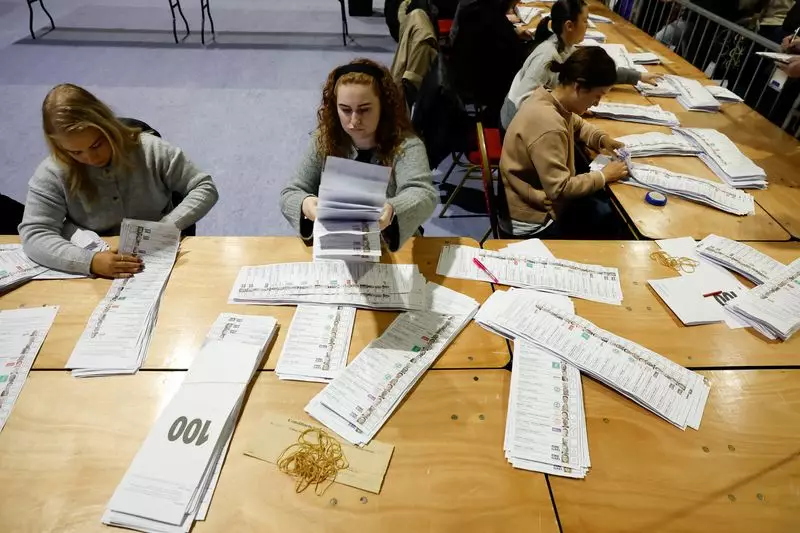The recent election in Ireland has set the stage for a potentially tumultuous political period as the country’s major centre-right parties vie for power. Fine Gael and Fianna Fáil, once staunch rivals, appear to be on the verge of forming a government, but as exit polls suggest, they may fall short of a clear majority. This creates uncertainty and instability moving forward, especially considering the unfolding challenges posed by external factors, including the upcoming inauguration of U.S. President-elect Donald Trump. His economic policies, which threaten to impact Ireland’s robust corporate tax sector, exacerbate the precarious political situation.
Moreover, the initial chaos has centred around the election results that put Sinn Féin in a strong position. While their numbers slightly edged out Fine Gael and Fianna Fáil, both centre-right parties are staunchly opposing any coalition with them. This pivotal decision not only speaks to the tactical mindset of these parties but also reflects the long-standing stigma surrounding Sinn Féin, rooted in its past association with the Irish Republican Army (IRA).
Profound discussions are likely to unfold as Fine Gael and Fianna Fáil scramble to reach the necessary magical number of 88 seats to establish a stable government. Political analysts suggest they may require alliances with smaller parties such as the Labour Party or the Social Democrats. If a coalition of four parties is required, the complexities and potential fragility of such an arrangement could lead to a government that struggles to maintain cohesion. With the Greens witnessing a notable decrease in electoral support, their limited capacity to contribute to a larger coalition raises further questions about the stability of any government formed.
As these electoral negotiations play out, Ireland’s unique proportional representation system complicates the situation. Though the system is designed to reflect the diverse political landscape, it can ironically result in larger parties obtaining a disproportionate number of seats relative to their vote share. Thus, until the final tallies are completed, the political picture remains muddled and tentative.
As Prime Minister Simon Harris called for the election, much of the political landscape was shaped by a lavish €10.5 billion budget intended to give voters a taste of economic prosperity. However, this move also drew scrutiny for the government’s perceived inability to correlate strong financial health with tangible improvements in public services. A populace frustrated with the prevailing inequities may be questioning the validity of the ruling parties’ economic strategies and overall effectiveness.
The impending threat posed by Donald Trump’s proposed corporate tax changes creates an additional layer of complexity. Ireland’s economy—largely buoyed by the influx of multinational corporations attracted by its favorable tax rates—could face severe repercussions should the new U.S. administration enact policies that undermine this advantage.
Lessons from the Past and Future Considerations
Looking back, the trajectory of Sinn Féin has taken unexpected twists. Once predicted to lead the government, the party saw significant declines in support, particularly among its working-class base. This derailing of political momentum underscores the volatile nature of public sentiment and how quickly it can be swayed by various issues, including immigration policies that may not sit well with all constituents.
Fine Gael and Fianna Fáil, despite their long-standing rivalry, have demonstrated a willingness to cooperate, previously adopting a rotational leadership arrangement. This historical precedent raises the possibility of a similar arrangement in the future if they succeed in forming a government. However, the question remains as to whether such a fragile coalition can adapt to addressing the potential crises looming on the horizon, including economic threats from abroad and internal discontent.
The future of Ireland’s political framework hangs in the balance as major parties prepare for what could be drawn-out negotiations, all while grappling with internal and external pressures that challenge their governance. As the landscape continues to shift, both the electorate and political players must navigate a path laden with uncertainty.

